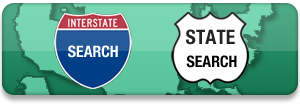If you’ve been to Bryce Canyon in summer, you know this national park is incredibly scenic, and also incredibly crowded. Even the ‘shoulder’ seasons of late spring and early fall are becoming congested with tourists. But come in the heart of winter, and you’ll have this playground of natural wonders to yourself.

Things to do in Bryce Canyon National Park in winter:
Much of Bryce Canyon stays open year round. With an elevation of around 7000 feet, families may or may not encounter snow; we did, on our trip, but I was told it varies by season. If there is snow, it’s possible to cross country ski or snowshoe in and around the park, and of course if you encounter dry ground, hiking is an option. Just keep an open mind and be flexible.
Start at Ruby’s:
On the north end of the park, just outside the boundary, lies Ruby’s Inn, which is actually an entire complex consisting of a activities center, wild west dinner show venue, restaurants, and hotel rooms. Reuben (Ruby) and Minnie Syrett arrived in the area in 1916 and founded Ruby’s in 1923. It’s owned by the family to this day.
If you need a place to stay overnight, Ruby’s has clean, basic hotel rooms on the edge of the park, but it’s a great stop if you’re in Bryce Canyon just for the day, too. In winter, Ruby’s offers a winter sports center with an ice skating rink, a nordic track with six miles of trails (which connects to more in the national park) and cross-country ski and skate rentals.

We rented skis and took to the nordic track, which curves around the Ruby’s complex to the edge of the canyon. After just a 15 minute ski, you are rewarded with amazing views of Bryce. I suggest taking the two mile loop with kids; cross-country skiing is not hard to learn and a fun way to see Bryce in the snow.
The restaurant at Ruby’s is adjacent, and has a family-friendly buffet at both breakfast and lunch, as well as a menu to order off of. At very low crowd time periods, such as when we visited, they may not offer the buffet, but will still have a full sale and soup bar. Ruby’s is not fine dining, by any means, but a solid choice for feeding the family. Next to the restaurant is an extensive store, where you can pick up souvenirs but also groceries, winter clothing, and anything else you may have forgotten.
See Bryce Canyon with an expert with Bryce Valley Tours:
You’ll have Bryce Canyon to yourself in the winter, but you may not know where to go or what you’re seeing. We had the opportunity to see the park with John of Bryce Valley Tours, who accompanied us on our ski trek and explained the geological history of the canyon as we skied. John also offers half-day and full-day tours, which can be tailored to your family’s interests. Half-day tours are $75/pp, which I think is a good value for the opportunity to have an expert guide you who knows which parts of accessible in snow, which are closed in winter, and the like.

Stop at the visitor’s center:
The Bryce Canyon visitor’s center is located directly past the entrance, and is small but worth the stop. The exhibit area explains the geological history of the canyon’s rock formations, including the hoodoos you’ll see everywhere. Get the kids their Junior Ranger booklets, and get stamps in your national park passports.
Drive to the most scenic lookouts in the park:
Bryce Canyon is a park that’s big on views. The major lookouts are all open in the winter, even in snow. Drive in and check out Inspiration Point—trust me, it’s aptly named—and Swamp Canyon. The latter is much more stunning than the name suggests. At each of these lookouts, short hiking trails are available. When we visited, the snow was several feet deep, but they were still open, albeit difficult to navigate. If you decide to walk a bit, be careful of your footing, as you ARE on the edge of a canyon. Snowshoes would help.

Tips for visiting Bryce Canyon National Park in winter:
- Call the park ahead of your trip to stay up-to-date on any road closures or closed exhibits; this is the off-season.
- Be prepared for any type of weather; you could get snow or sun. Make sure everyone in your group has winter boots, waterproof pants, a hat, gloves, and jacket. You don’t want to get caught off-guard and have to buy all this at Ruby’s!
- If there IS snow, try snowshoeing to get around on the trails.
- Wear sunscreen; the high elevation causes people to burn easily if the sun is out.
- Hydrate and go slowly at elevation until you’ve acclimated. Check out our tips for adjusting to high elevations.





























 Downtown Spokane is pedestrian-friendly, and from the Holiday Inn and Suites, we were able to easily access Riverfront Park. The walk through the park is lovely, and takes visitors directly into the main downtown core. Here’s what we never miss in downtown Spokane:
Downtown Spokane is pedestrian-friendly, and from the Holiday Inn and Suites, we were able to easily access Riverfront Park. The walk through the park is lovely, and takes visitors directly into the main downtown core. Here’s what we never miss in downtown Spokane:


















